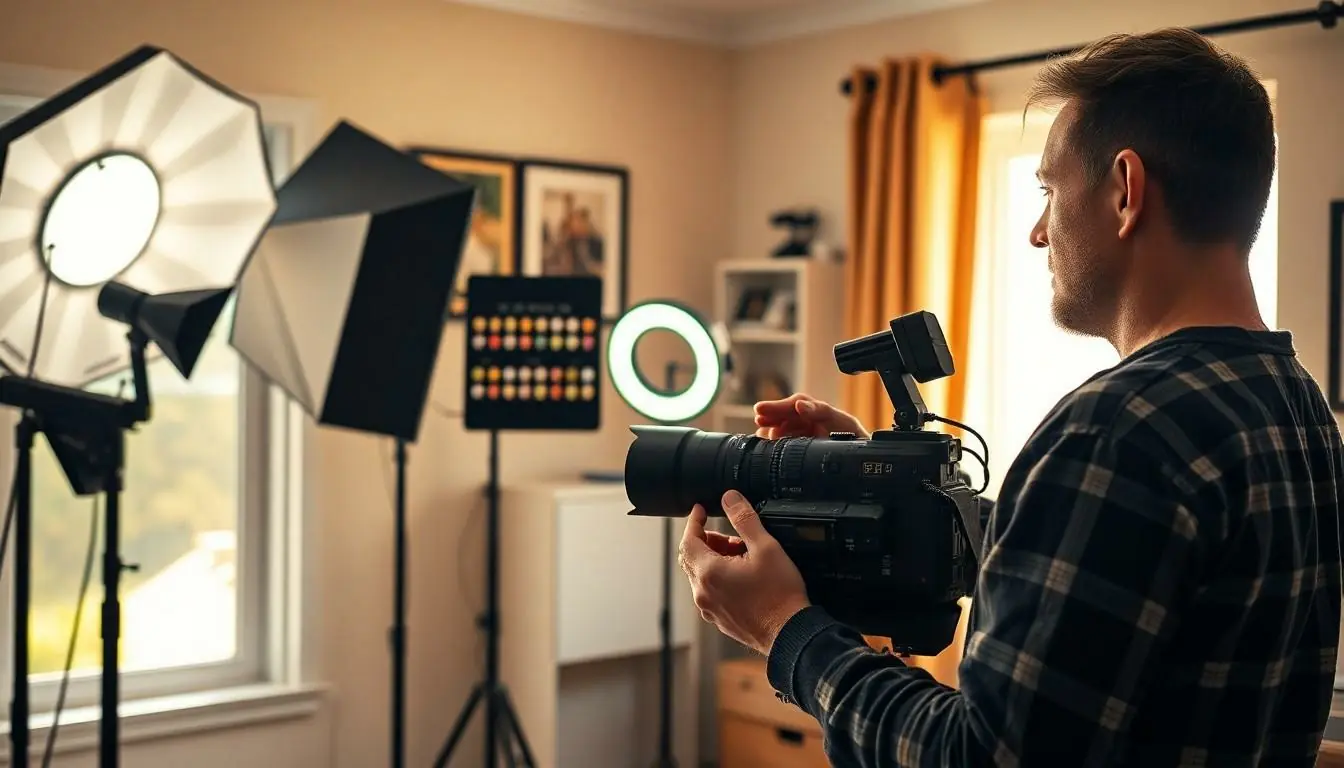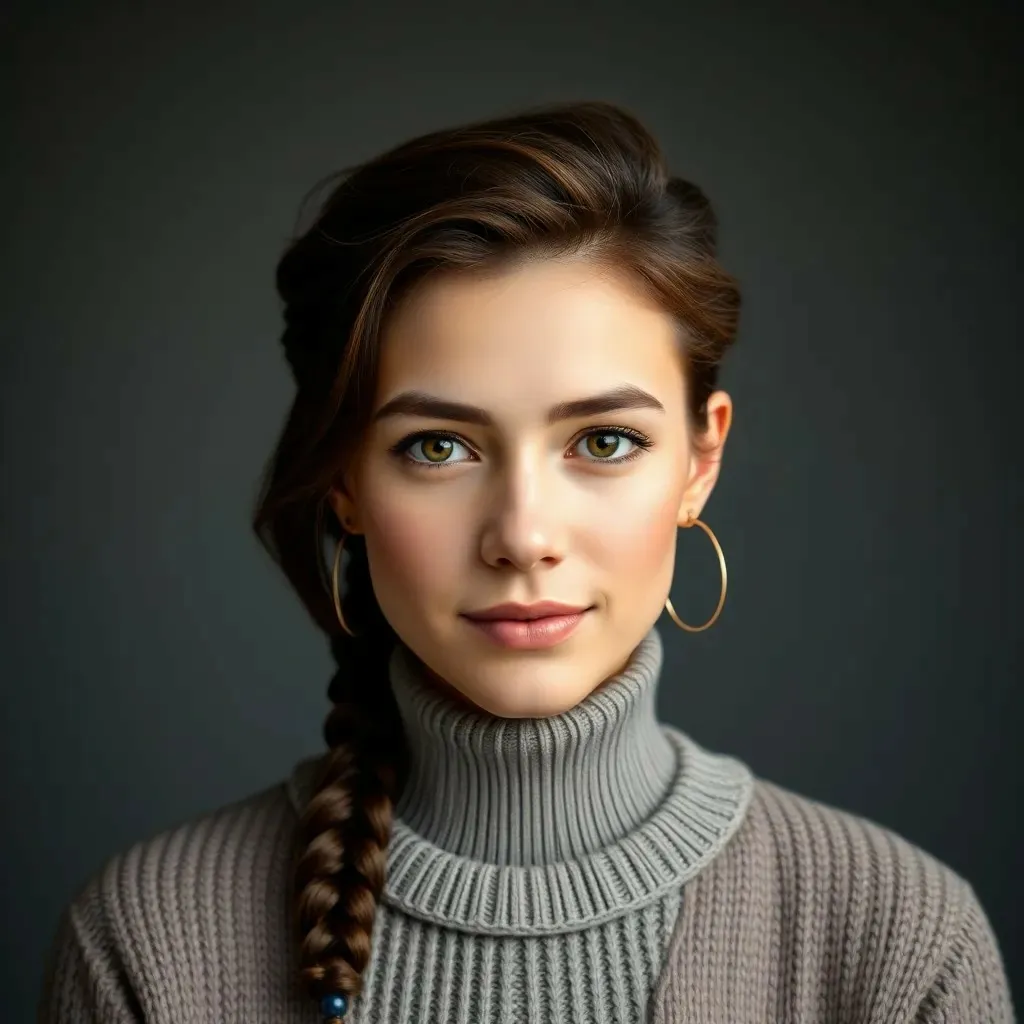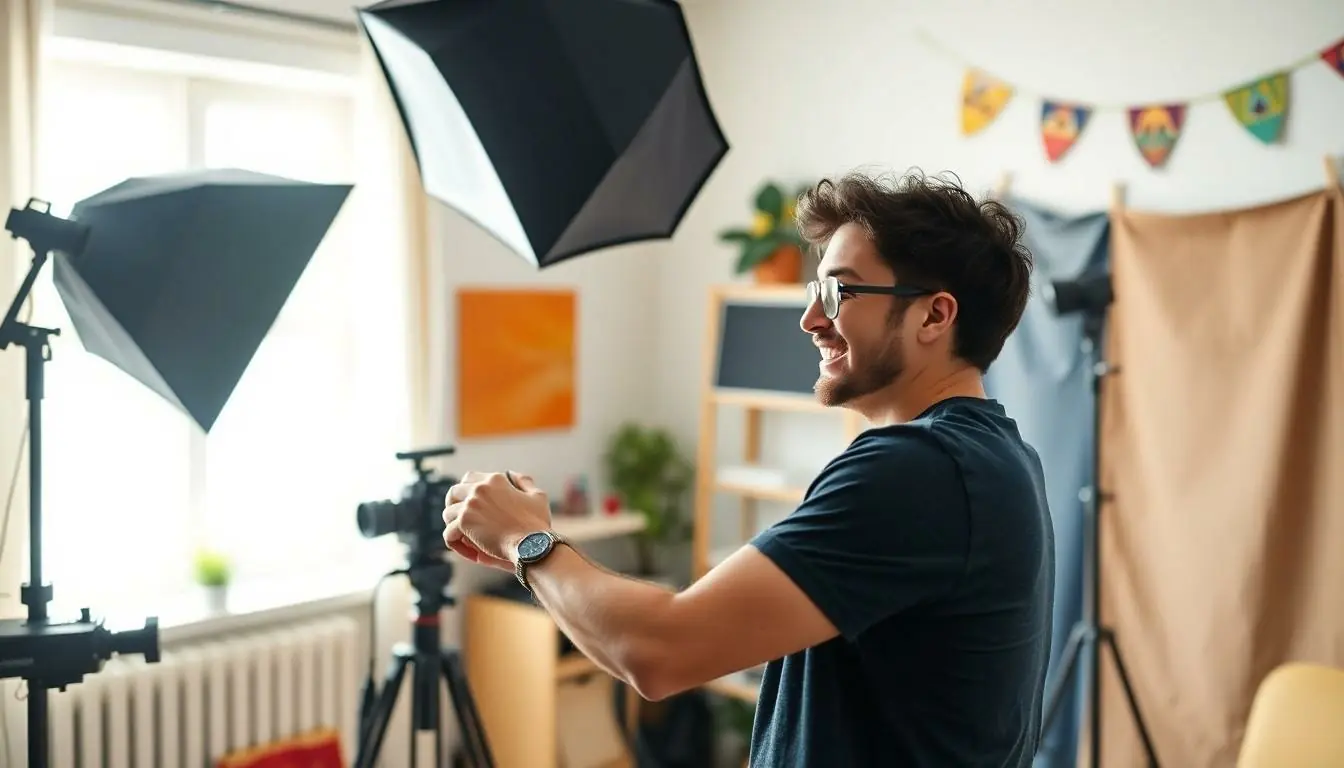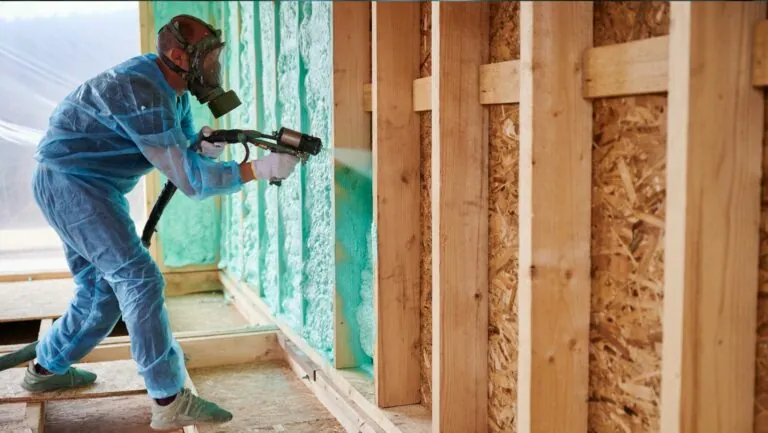In the world of video creation, lighting can make or break your masterpiece. Imagine filming a cinematic gem only to have it look like a poorly lit horror movie. Not exactly the vibe you’re going for, right? With the right lighting setup, you can transform your home into a professional studio without breaking the bank or sacrificing your sanity.
Table of Contents
ToggleUnderstanding the Importance of Lighting
Lighting plays a vital role in video production, affecting how viewers perceive the content. It enhances the visual aesthetic, bringing depth and clarity, which contributes to a more engaging experience. Effective lighting eliminates shadows and highlights important subjects, ensuring that the message remains clear.
Poor lighting compromises video quality, leading to grainy, dull, or overly bright visuals. Such conditions distract viewers, detracting from the intended narrative. It can create an unprofessional look, impacting audience engagement and retention.
Moreover, different lighting techniques can evoke various emotions. For instance, soft lighting promotes a warm atmosphere, while stark lighting generates tension. Knowing these effects allows content creators to tailor their approach based on desired outcomes.
Various light sources exist for home setups. Natural light from windows offers soft illumination but varies throughout the day. Artificial lights, such as softboxes or LED panels, provide consistent brightness and control over shadows. Both types can be combined for optimal results.
Adjusting light placement and intensity can transform a scene drastically. Front lighting illuminates faces, making them appear clear, while side lighting adds depth and dimension. Backlighting creates silhouettes, which can be dramatic when used correctly. Understanding how to leverage these methods is essential for achieving a polished look.
Mastering lighting techniques is essential for home video creators. With the right approach, anyone can enhance production quality. Prioritizing these elements ensures that video content resonates with audiences effectively.
Types of Lighting for Video

Lighting types significantly affect video quality. Understanding these options aids in creating optimal setups.
Natural Light
Natural light comes from sunlight, making it versatile and easy to access. It offers a soft glow that creates a pleasing atmosphere. Filmmakers can utilize windows to harness this light, achieving a well-lit scene without additional equipment. Time of day matters; early morning and late afternoon provide warm, diffuse lighting. While sunny days may create harsh shadows, overcast days deliver a uniform light quality. Adjusting camera settings helps counterbalance exposure issues when using natural light.
Artificial Light
Artificial light encompasses various tools designed for specific video needs. Common options include softboxes, LED panels, and ring lights, each providing distinct lighting characteristics. Softboxes diffuse light to reduce harsh shadows, ideal for interviews. LED panels offer adjustable brightness and color temperature, allowing flexibility and easier control over scene aesthetics. Ring lights create a flattering look for close-ups, often used in beauty and tutorial videos. Positioning and intensity play vital roles in achieving the desired visual effect with artificial light, ensuring a professional output.
Essential Equipment for Home Lighting
Effective lighting requires specific equipment to achieve a professional look during video production. Focus on using the right tools to enhance visual quality.
Softboxes
Softboxes provide soft, diffused lighting that reduces harsh shadows. These fixtures feature a reflective interior and fabric covering, making them ideal for creating an even light distribution. They work well for interviews or tutorials, as softboxes flatter skin tones and add warmth to scenes. Various sizes are available, allowing users to choose based on their setup space. Setting them at a 45-degree angle from the subject often yields the best results.
LED Lights
LED lights offer versatility and efficiency for home lighting setups. These lights consume less power compared to traditional bulbs and produce minimal heat, making them safe for extended use. Adjustable brightness and color temperature settings cater to different filming needs. With options ranging from panels to portable lights, creators can adapt their lighting to specific environments. Placing LED lights strategically enhances the overall mood and clarity of the video.
Ring Lights
Ring lights deliver circular illumination, perfect for close-up shots like makeup tutorials or product reviews. This design minimizes shadows and highlights the subject evenly. Many ring lights include adjustable brightness and color filters for versatile lighting options. Their portability makes them easy to set up in various locations, whether indoors or outdoors. Emphasizing the subject’s features while maintaining a flattering effect contributes to professional-quality video.
Techniques for Effective Lighting
Understanding lighting techniques enhances video quality at home. Effective use of lighting makes a dramatic difference in visual presentation.
Three-Point Lighting
Three-point lighting is a standard technique used in video production. This method includes key light, fill light, and backlight. Key light serves as the primary light source, illuminating the subject’s face. Fill light softens shadows created by the key light, creating balance. Backlight separates the subject from the background, adding depth. Proper placement of these lights is crucial; for instance, position the key light at a 45-degree angle to the camera for optimal effect. Adjusting light intensity promotes a professional look in home videos.
High-Key vs. Low-Key Lighting
High-key lighting features bright and even illumination, often reducing shadows. This technique is common in comedies and upbeat content, ensuring a cheerful atmosphere. Low-key lighting creates mood and drama by emphasizing shadows, often used in thrillers or emotional scenes. Intensity can be manipulated to achieve the desired effect; for example, using fewer lights and lower brightness for low-key setups enhances depth. Choosing between high-key and low-key lighting depends on the tone of the video, guiding the viewer’s emotional response.
Positioning Your Lights
Proper light positioning plays a vital role in video quality. Effective placement enhances clarity, depth, and overall visual impact.
Angles and Placement
Position lights at appropriate angles to minimize shadows and achieve a balanced look. The key light typically sits at a 45-degree angle from the subject, illuminating the face effectively. Fill lights help soften and reduce harsh shadows, positioned slightly opposite the key light. Backlights enhance depth by separating the subject from the background, often placed behind and slightly above the subject. Experimenting with distance changes the brightness and shadows, allowing creators to discover what works best for their setup. Adjusting angles can also alter the mood of the scene, making it dynamic and engaging for the audience.
Light Modifiers
Light modifiers can dramatically enhance the quality of lighting by diffusing or shaping the emitted light. Softboxes provide soft, even lighting, reducing harsh contrasts, ideal for interviews or tutorials. Umbrellas reflect and scatter light, creating a broader spread for softer shadows. Bounce cards reflect light back onto the subject, filling in shadows without introducing additional light sources. Using gels allows for color temperature adjustments, enhancing mood or thematic elements in videos. Selecting the right modifier impacts both the aesthetic and clarity, elevating the final production quality significantly.
Setting up effective lighting at home is a game changer for video production. By understanding the nuances of light sources and techniques, anyone can elevate their content quality. Experimenting with different setups allows for creativity while ensuring the final product resonates with viewers.
With the right tools and techniques, creators can achieve a professional look without breaking the bank. The importance of light positioning and modifiers can’t be overstated as they play a crucial role in achieving the desired mood and clarity. Embracing these principles will not only enhance visual storytelling but also engage audiences more effectively.






